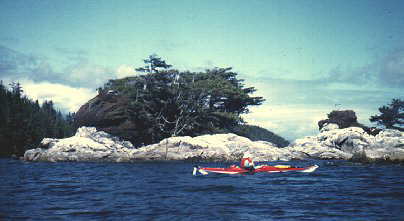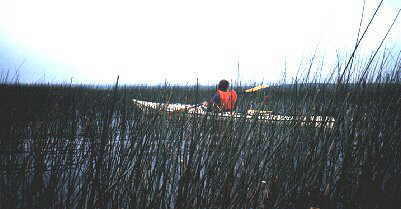
by Richard E. Winslow III
As something of a stranger to western New Hampshire I discovered that Grafton Pond was no easy destination. Getting there became an ordeal of hit-and-mostly-missed dirt roads. A tucked-away 235-acre body of water in the Canaan-Enfield region, the Grafton Pond Reservation was donated to, and has been administered since 1984 by, the Society for the Protection of New Hampshire Forests (SPNHF). Finally I found it, and my dusty car and I emerged at a dam. Beyond lay the blue sheen of Grafton Pond, lovely in July’s midmorning sun.
My guiding friends had raved, almost conspiratorially, about Grafton Pond’s magical waters. John, my guide for today’s trip, was one of the most enthusiastic. “There is nothing like it left in New Hampshire,” he said. “With an unspoiled shoreline, the pond is full of loons, ducks, and great blue heron.” That endorsement convinced me to make the pilgrimage to the pond at the earliest opportunity.
Once at water’s edge, I spotted John and three other early-bird kayakers warming up in a cove. When I yahooed in their direction, John paddled toward me.
After twenty-five years of kayaking, John had developed the physique of a weight lifter. During those years, he had provided a guide service for Red Cross and teen groups. Just for the pure joy and solitude, he often kayaked solo in the early morning on Lake Winnepocket in his home village of Webster, New Hampshire.
At the Grafton Pond beach put-in, John had set aside a red Wilderness Systems Cape Horn kayak for me to use. After minor adjustments to the pegs, the kayak fit me as though it had been measured by a tailor.
At that moment, a much larger kayaking party was assembling at the put-in, preparing to launch its own expedition. John hailed the guide, who he knew from previous chance meetings here at the pond. A trip leader from the SPNHF, which often organized its own trips on the pond, she stayed in great year-round shape. “My son and I are climbing the 4,000-foot New Hampshire peaks during the winter,” she said, “and I lead trips here the rest of the year.”
John and I quickly joined our comrades waiting in the cove. They were Roger and Donna, a married couple, and a woman John knew from work. All were ardent adherents of the kayaking lifestyle, anxious to explore the pond.
We were off! John decided we should wend our way in a counterclockwise direction to take advantage of the best scenery. Our world became a maze of meandering passageways between islands, around peninsulas, and into coves closing and opening in haphazard fashion. Along the shore was a tangle of thickets of almost impenetrable forest, blow down, with ancient pines and birches. The forest was allowed to grow, thrive, and die in its natural cycle – in marked contrast to the grooming and “beautification” guidelines that state-park trail crews follow to clear out campsites and access roads. We soon passed a huge uprooted tree trunk, which would have required a careful bushwhack even to attempt a landing on that stretch of shoreline.
The glassy water surface, the cool air, and the absence of wind afforded ideal conditions. With each paddle stroke, we glided deeper into solitude. No one talked much, just an occasional whisper; nothing needed saying in this enchanted place.
As every outdoors enthusiast knows, a kayak seat is the best position for observing wildlife, especially birds, with a minimum of noise. As we entered more open water, John, in the lead, motioned silently to a great blue heron perched on a rock slab island. We moved forward and eventually the bird noticed us. Almost nonchalantly, the heron lofted like a hang glider, arching and closing its wings effortlessly as it landed on a birch branch on an islet a short distance ahead. The natural setting afforded the bird perfect camouflage as its slender body blended in with the tree limbs. When we approached again, the heron flapped away, a pattern it repeated three or four times, seemingly enjoying this hide-and-seek, come-and-find-me game for its morning exercise. As it flew off for the last time, perhaps it relished the extra dimension of flight, leaving us to watch enviously from our kayak cockpits.
Our encounters with the loons followed a similar routine. As the pond widened, two or three loons allowed us to approach only up to a certain distance, then they submerged to reappear farther away. Endowed with superior underwater swimming skills, the loons reveled in their mastery of concealment, mocking us humans with their evasion.
By now we had reached the wide-open centre of the pond, with vistas to the far shoreline and to Mount Cardigan. Its bald summit cone glowed silver in the sun, a beacon to guide us. I reminisced to the others about my visit some years earlier at the Appalachian Mountain Club lodge at Cardigan’s base. I had shared a delicious buffet supper with the mountaineers. Perhaps there will be another trip someday with John’s group, climbing Mount Cardigan to view Grafton Pond below.
As we bunched together in anticipation of a lunch stop, the conversation turned to the exploits of daredevil kayakers and their descents. Over the years, I had heard many stories about thrill seekers who went beyond the bounds of common sense to flash down cataracts, either to glory or to oblivion. ” ‘There are old pilots and there are bold pilots,’ I repeated the old saying, ” ‘but there are no old bold pilots.’ I guess the same is true for kayakers.”
I reflected that Grafton Pond was an ideal place to find spiritual rest and inner peace. Foolish exploits involving Class V rapids, Himalayan summits, or fall-forever canyons only agitated me. My mind was exceptionally clear and placid on this day -just like the water’s surface. The whole world spread out in a panorama from the vantage of my kayak seat.
John drew alongside a slender island, just a slab rock foundation covered with earth and crowned with a row of tall pines resembling wooden ship masts. This pristine isle had nary a path, fire ring, or tree stump – just a pine-needle blanket and a profusion of ripe low-bush blueberries (which later provided our dessert). At a distant island behind us, the Forest Preservation kayakers had also landed for lunch. After lunch, a few of our party snoozed on pine-needle mattresses, two others retreated to the far end of the islet for a smoke, and I treated myself to a brisk dip in the pond, with every open pore becoming an instant goose pimple.
Our reverie over, we pointed our kayaks’ noses toward the northern (Mount Cardigan) end of the pond. Evidently the other expedition had turned back; we never saw them or anyone else for the rest of our trip. Off in the distance, the shoreline seemed solid and continuous, but it proved deceptive. As we drew closer, we encountered topography much like what we had seen at the start of our expedition – another obstacle course with a maze of islands and channels, reedy grass in shallow water, and half-sunken waterlogged trees. Time and again, John would lead us into what looked like a dead end, only to lead us out through a half-hidden passageway. Paddling through this labyrinth, I recalled the Lakota Native American saying, “If you don’t know where you’re going, any path will take you there.” Eventually we neared the end and reluctantly circled around the last island before heading southward and home.

By now the heat and glare of the afternoon sun had reduced most of us to drowsiness, but John and B.J. still had enough energy to cool off with an impromptu water fight.
The mood and the tempo of the trip were changing rapidly from the carefree, relaxed paddle we had savoured that morning. A warm breeze created a headwind that pushed ripples against us – nature’s subtle hint that we should not tarry unnecessarily. As we completed our circuit along the western shore, we noted the far less dramatic shoreline scenery, uninterrupted by islets. With the best exploration of the day behind us we elected to push on without delay.
After forty-five minutes at an accelerated pace, Roger, Donna and I arrived at the take-out – the same spot where we bad put in. John and B.J. lingered offshore near an island, where John was cooling off by executing Eskimo self-arrest half-rolls, as he had been doing all day.
The scene at the damsite had changed considerably since our departure that morning. Now the place was teeming with locals who well knew the intricacies of the back roads to the pond: an army of kid swimmers, sunbathers, and picnickers, along with a navy of canoeists, sailors, and tubers. All were living it up at Grafton Pond City, staked out and settled in. Recalling Woody Guthrie’s This Land Is Your Land, I silently hummed my own version of the lyrics: This Pond Is Your Pond, a people’s pond open to all to enjoy, free of charge.
I glanced back to see John and B.J. paddling in. He looked a bit dazed. “I did a half Eskimo roll too vigorously,” he explained, “and everything popped off – prescription glasses, clip-on sunglasses, and head strap. It all sank to the bottom.” John’s quick search of his van brought instant relief; he had indeed brought a spare pair of glasses, enabling him to drive home.
Throughout the day, we all spoke frequently of the next trip we intended to take on Grafton Pond. We were determined to return and launch our kayaks here, gliding silently into the world of herons and loans. There’s no doubt in my mind that anyone who cannot feel quiet elation and joy at Grafton Pond probably will be unable to find it anywhere else.
For trips, information and recreational opportunities contact SPNHF, 54 Portsmouth Street, Concord, NH 03301; Telephone (603) 224-9945.
This article originally appeared in the April 2002 issue of Atlantic Coastal Kayaker.
